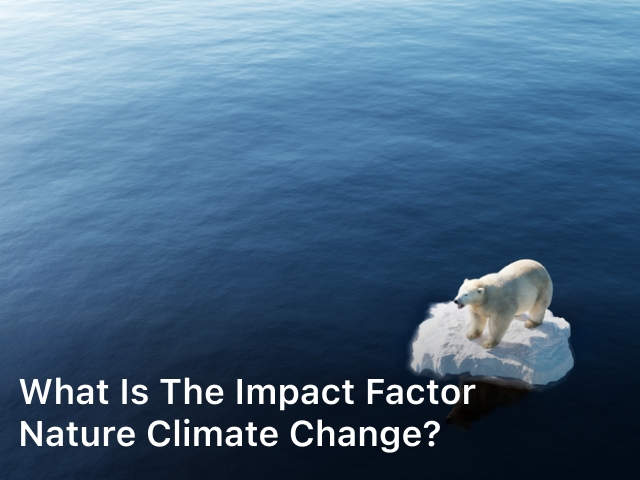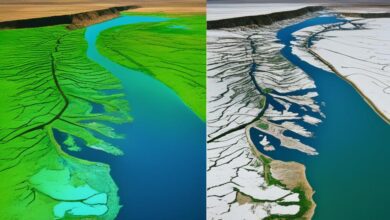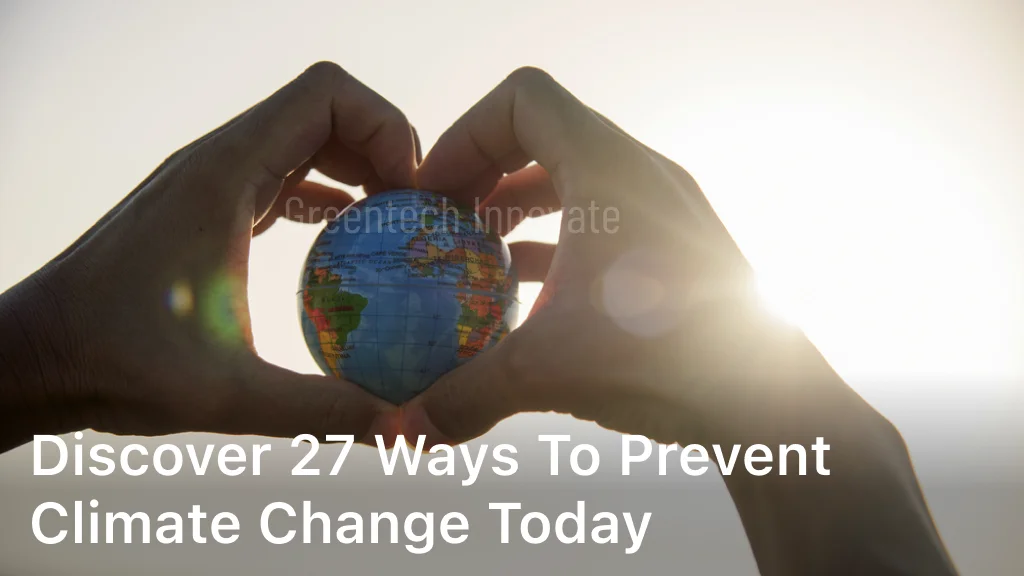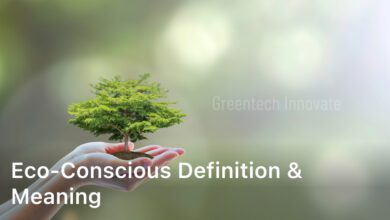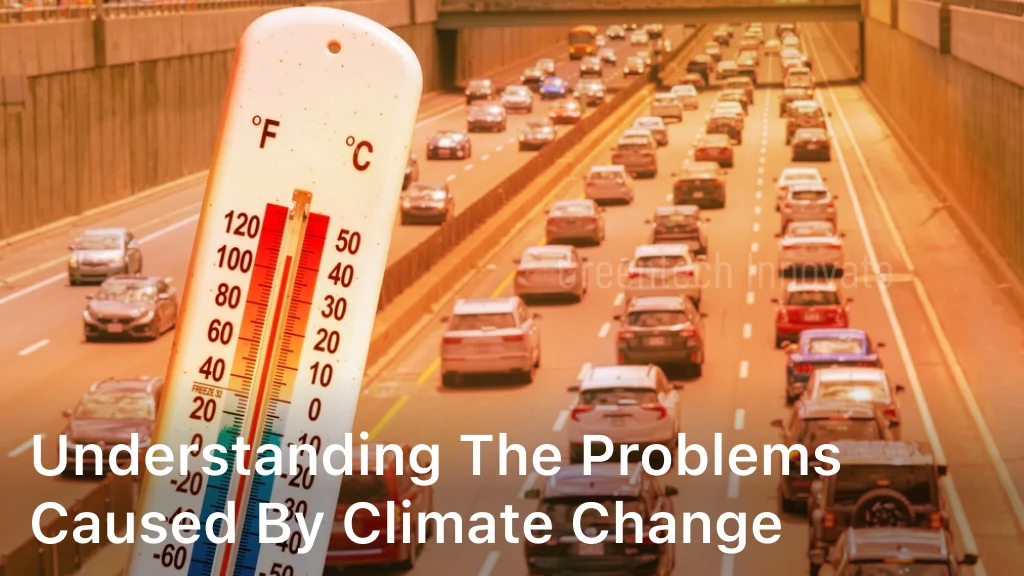
Greentechinnovate.com. Understanding the Problems Caused by Climate Change – Explore how the Problems Caused by Climate Change impact us on a global scale. Together, let’s understand these issues for a better future.
Climate change is a global phenomenon that affects everyone. It refers to the long-term changes in temperature, precipitation, and weather patterns across the world, caused by human activities like the burning of fossil fuels and deforestation. The problems caused by climate change are numerous and wide-ranging, and it is crucial to understand them to find solutions.
In this section, we will delve into the various problems that arise due to climate change. By gaining a comprehensive understanding of these issues, we can work towards finding effective solutions for a better future.
Key Takeaways:
- Climate change is a global phenomenon caused by human activities.
- There are numerous problems caused by climate change.
- Understanding these issues is crucial for finding effective solutions.

Rising Temperatures and Heatwaves
As we mentioned in the previous section, climate change is causing a rise in global temperatures. This increase leads to more frequent and intense heatwaves, which have severe consequences for both our health and the environment.
Heatwaves are defined as prolonged periods of abnormally high temperatures, typically lasting several days or even weeks. They can occur anywhere in the world, but are most common in urban areas.
Keep Reading : Effective Tips for Reducing the Effects of Climate Change
One of the most significant impacts of heatwaves is the risk they pose to our health. High temperatures can cause heat exhaustion, heatstroke, and even death. Certain groups, such as young children, elderly adults, and those with pre-existing medical conditions, are particularly vulnerable to these risks.
Heatwaves also have serious environmental consequences. They contribute to the melting of polar ice caps and glaciers, leading to rising sea levels. This phenomenon leads to coastal erosion, increased flooding, and the displacement of communities living in low-lying areas.
Moreover, heatwaves can affect agriculture and water resources. High temperatures and drought conditions can lead to crop failures, reduced yields, and higher food prices. They can also cause water scarcity, making it difficult for farmers to irrigate their crops.
As the planet continues to warm, heatwaves are expected to become more frequent and intense. It is crucial that we take action to prevent further damage by reducing greenhouse gas emissions, promoting clean energy, and adapting to the effects of climate change.
Keep Reading : Top Effective Ways to Prevent Global Warming Today
Melting Ice and Rising Sea Levels
Climate change causes the melting of polar ice caps and glaciers, leading to rising sea levels. This phenomenon puts communities living in low-lying areas at risk of displacement due to increased flooding and coastal erosion.
The melting of ice also affects the delicate balance of ocean ecosystems, threatening the survival of marine species. As the ice melts, nutrients are released, altering the chemistry of oceans, which affects the food chain.
| Surface Area (sq km) | Volume (cu km) | |
|---|---|---|
| Antarctic Ice Sheet | 14,000,000 | 30,000,000 |
| Greenland Ice Sheet | 1,710,000 | 2,850,000 |
| Arctic Sea Ice | 14,000,000 | 16,000,000 |
Impact on Coastal Communities
As sea levels continue to rise, coastal communities are experiencing more frequent and intense floods, putting their homes and livelihoods at risk. The displacement of people from their homes due to flooding and the destruction of infrastructure lead to economic losses and social disruption.
Impact on Marine Ecosystems
The melting of ice affects the ocean’s salt levels, currents, and temperature, leading to changes in marine ecosystems and the distribution of marine species.
As the ice melts, more freshwater flows into the ocean, reducing the salt concentration. This change can affect the food chain, as some species require specific salinity levels to survive.
Global Efforts to Address Rising Sea Levels
The United Nations has recognized the threats posed by climate change and rising sea levels, and has launched initiatives to address these issues.
The Sustainable Development Goal 14 aims to conserve and sustainably use the oceans, seas, and marine resources for sustainable development.
“We cannot afford to ignore the enormous impact that climate change is having on our planet, including rising sea levels. It is imperative that we take collective action to address this issue and work towards a more sustainable future.”
Keep Reading : Discover 27 Ways to Prevent Climate Change Today
Rising Temperatures and Heatwaves
Climate change is causing a rapid rise in global temperatures, leading to more frequent and intense heatwaves.
Extreme Weather Events: Heatwaves are classified as extreme weather events and are becoming more common due to climate change. In 2019, Europe experienced two record-breaking heatwaves that led to widespread power outages, hundreds of deaths, and wildfires.
Health Impacts: Heatwaves can pose serious health risks, particularly to the elderly, children, and those with pre-existing medical conditions. Heat-related illnesses, such as heat exhaustion and heatstroke, can be fatal if not treated promptly.
“Heatwaves can pose serious health risks, and it’s important to take precautions to protect ourselves and our loved ones.”
Disrupting Ecosystems: High temperatures can also disrupt ecosystems, leading to changes in migration patterns and breeding cycles for animals. This disruption can further impact the food chain and ultimately affect us as well.
Agricultural Impact: Heatwaves can also cause crop failures and reduce yields, affecting food security and leading to rising food prices.
| Heatwave Impacts | Effects of Climate Change |
|---|---|
| Increased risk of heat exhaustion and heatstroke | More frequent and intense heatwaves |
| Disrupts ecosystems and migration patterns | Changes in temperature impact ecosystems |
| Crop failures and reduced yields | Increases in temperature affect agriculture |
It’s crucial to take action and address the root causes of climate change to mitigate the impacts of rising temperatures and heatwaves. Together, we can make a difference and create a sustainable future for all.
Keep Reading : Understanding the 5 Causes of Climate Change Today
Disruption of Ecosystems and Biodiversity Loss
Climate change has a profound impact on the functioning of ecosystems and the diversity of species they host. The disruption of ecosystems and biodiversity loss due to climate change affects the services ecosystems provide, such as pollination, water purification, and carbon sequestration.
These effects further exacerbate the effects of climate change, leading to a cascade of negative consequences on both ecosystems and society.
One of the significant consequences of biodiversity loss caused by climate change is the reduction of resilience in ecosystems. Biodiversity ensures that ecosystems can withstand environmental stressors, such as fires, floods, droughts, and pests. However, as species go extinct due to climate change, ecosystems become less resilient and more prone to collapse.
The loss of marine biodiversity is another significant impact of climate change. The ocean acts as a carbon sink, absorbing about a quarter of all carbon dioxide emissions.
The absorption of these emissions leads to ocean acidification, causing harm to marine life and affecting the ocean’s ability to absorb carbon dioxide effectively.
The polar regions are also experiencing a significant loss of biodiversity due to climate change. The melting of sea ice and permafrost causes the loss of habitats for species such as polar bears, seals, and Arctic foxes. This loss of habitat results in local extinctions and threatens the resilience of Arctic ecosystems.
Keep Reading : Understanding Human Activities That Cause Climate Change
Case Study: The Great Barrier Reef
The Great Barrier Reef is one of the world’s most complex and diverse ecosystems providing essential services such as food, income, and cultural significance to several communities.
However, climate change poses a severe threat to the Great Barrier Reef. The warming and acidification of oceans lead to coral bleaching, which occurs when coral expel the algae that give them their color and provide them with food. This process leads to the death of the coral and disrupts the entire reef ecosystem, causing far-reaching consequences.
| Effect of Climate Change on the Great Barrier Reef | Consequence |
|---|---|
| Coral bleaching | Leads to the death of coral, reducing the diversity of species that depend on the ecosystem. |
| Acidification of oceans | Affects the ability of organisms, such as oysters, to build shells, threatening the food web and the livelihoods of people who depend on them. |
| Rising sea temperatures | Leads to the migration of fish and other species, disrupting the balance of the ecosystem and affecting local communities’ food security. |
“The Great Barrier Reef is a warning of the dangers of climate change and the urgency to take action. If we don’t act now, we risk losing this valuable ecosystem and the benefits it provides to both nature and humans.”– The Great Barrier Reef Foundation
To mitigate the impacts of climate change on ecosystems and biodiversity, we need to take immediate action to reduce greenhouse gas emissions and promote sustainable practices.
By protecting and restoring ecosystems, conserving biodiversity, and reducing our carbon footprint, we can work towards creating a more sustainable future.
Keep Reading : What is The Impact Factor Nature Climate Change?
Risks to Agriculture and Food Security Due to Climate Change
As the global climate changes, the agricultural sector is facing several risks that jeopardize food security. Crop yields are dropping due to changes in rainfall patterns and extremes in temperature. Furthermore, climate change is leading to a higher prevalence of pests and crop diseases, reducing crop yields even further.
These changes in agriculture affect food security, food availability, and food prices. With more people to feed globally, finding ways to feed everyone is critical.
Agriculture Risks Due to Climate Change:
Changes in rainfall patterns have a significant effect on agriculture. Irrigated crops rely on consistent water supply for productive yields. Dry areas will experience more droughts, which will cause crop failure and even desertification, leading to a reduction in potential farming land. Conversely, areas with a high intensity of rainfall may suffer from increased soil erosion, making agriculture challenging and less productive.
Higher temperatures due to climate change are also affecting the agriculture sector. Temperatures above the heat threshold cause heat stress in plants, making them more susceptible to pests, diseases, and eventual death. The increase in temperature also alters the life cycles of pests and pathogens, leading to an increase in their populations.
Food Security:
Food security is the state of having a reliable and secure access to nutritious food. Climate change threatens food security by reducing crop yields, increasing food prices, and making it harder for farmers to grow enough food. These risks, in turn, affect the availability and accessibility of food.
The United States, as one of the world’s leading food producers, could face severe challenges in the future due to climate change. Many parts of the country are already experiencing frequent weather extremes, including floods, droughts, and heatwaves, which impact crop production.
Sustainable Agriculture and the Fight Against Climate Change:
Sustainable agriculture is a term used to describe efficient farming practices that are environmentally friendly. This approach aims to reduce agriculture’s contribution to climate change and improve food production for future generations.
Efforts to promote sustainable agriculture include reducing greenhouse gas emissions, improving soil health, and conserving water resources. These practices could help mitigate the risks to agriculture posed by climate change and build resilience among farmers and their communities.
“Agriculture must transform towards more resilient, sustainable, and inclusive systems that embrace biodiversity, protect nature, and guarantee social and economic equity,” says FAO Director-General Qu Dongyu.
We believe that by prioritizing sustainable agriculture and taking action to mitigate the risks posed by climate change, we can create a more food-secure and sustainable future for us all.
Health Impacts and Disease Spread
As global temperatures continue to rise due to climate change, we are seeing a rise in heat-related illnesses such as heat stroke and dehydration. Additionally, air pollution is worsening due to increased extreme weather events, leading to respiratory problems such as asthma and lung disease.
Waterborne diseases are also on the rise, with flooding caused by extreme weather events creating breeding environments for disease-carrying insects like mosquitoes. The geographical range of these vectors is expanding due to rising temperatures, leading to the spread of diseases such as dengue fever and malaria.
“Climate change is not just an environmental issue; it is a public health crisis.” – Gina McCarthy
Communities with low access to healthcare and resources are particularly vulnerable to the health impacts of climate change. In the United States, studies have shown that low-income and minority communities are disproportionately affected by the effects of climate change, leading to increased health disparities and reduced quality of life.
It is essential that we take steps to mitigate the effects of climate change to protect the health and wellbeing of everyone. This includes reducing greenhouse gas emissions, investing in green infrastructure and renewable energy, and prioritizing the needs of vulnerable communities in climate change adaptation plans.
Conclusion
In conclusion, climate change poses significant challenges to our planet and society. By gaining a comprehensive understanding of the problems caused by climate change, we can work towards finding effective solutions for a better future.
We must acknowledge that rising temperatures and heatwaves, melting ice and rising sea levels, extreme weather events, disruption of ecosystems, threats to agriculture and food security, and health impacts and disease spread are all interconnected and contribute to climate change.
It is our collective responsibility to take action to mitigate the impacts of climate change. We can do this by reducing our greenhouse gas emissions, transitioning to renewable energy sources, promoting sustainable land use practices, investing in climate-resilient infrastructure, and adapting to new challenges brought about by climate change.
We must also prioritize collaboration and engagement to find solutions that work for everyone. By involving communities, governments, and businesses in climate action, we can ensure a just transition towards a sustainable future.
Climate change is an urgent and pressing issue, but by working together, we can create a better world for ourselves and future generations. Let us take action now and do our part in addressing this global challenge.
FAQ
What are the problems caused by climate change?
Climate change leads to various problems, including rising temperatures and heatwaves, melting ice and rising sea levels, extreme weather events, disruption of ecosystems and biodiversity loss, threats to agriculture and food security, and health impacts and disease spread.
How does climate change contribute to rising temperatures and heatwaves?
Climate change causes an increase in global temperatures, leading to more frequent and intense heatwaves. These heatwaves pose serious health risks, disrupt ecosystems, and affect agriculture and water resources.
What are the effects of melting ice and rising sea levels due to climate change?
Climate change causes the melting of polar ice caps and glaciers, resulting in rising sea levels. This phenomenon leads to coastal erosion, increased flooding, and the displacement of communities living in low-lying areas.
How does climate change intensify extreme weather events?
Climate change contributes to the intensification of extreme weather events, such as hurricanes, droughts, floods, and wildfires. These events result in significant economic losses, property damage, loss of lives, and long-term disruptions to communities.
How does climate change disrupt ecosystems and lead to biodiversity loss?
Climate change disrupts natural ecosystems, resulting in the loss of biodiversity. This loss affects essential services provided by ecosystems, such as pollination, water purification, and carbon sequestration, further exacerbating climate change.
What threats does climate change pose to agriculture and food security?
Climate change impacts agriculture by altering weather patterns, reducing water availability, and increasing the prevalence of pests and diseases. These changes pose significant threats to global food security and contribute to rising food prices.
How does climate change impact human health and contribute to disease spread?
Climate change affects human health through increased exposure to heat stress, air pollution, and waterborne diseases. Additionally, the geographical range of disease-carrying vectors, such as mosquitoes, expands, leading to the spread of diseases like dengue fever and malaria.
Why is it important to address the problems caused by climate change?
The problems caused by climate change are widespread and have far-reaching consequences for our planet and society. By acknowledging these issues and taking collective action, we can mitigate the impacts of climate change and create a sustainable future for ourselves and future generations.
